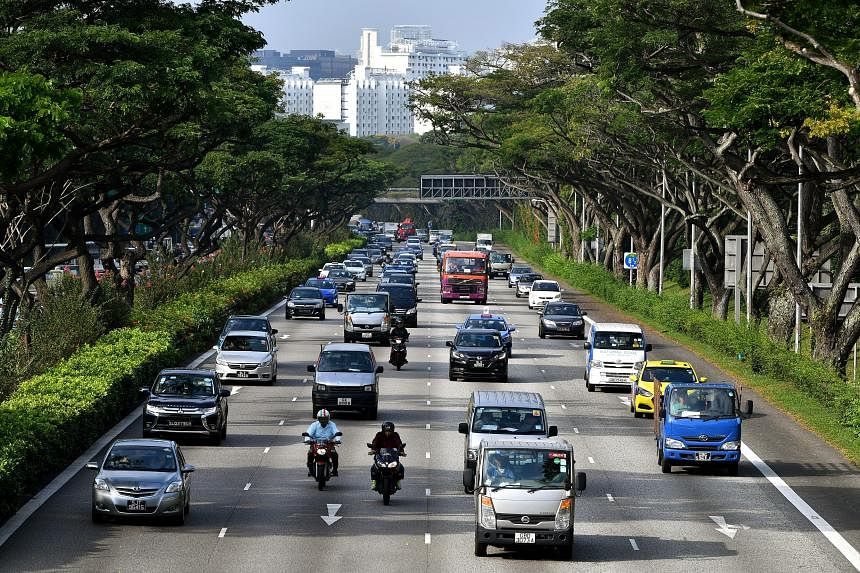SINGAPORE - A People’s Action Party MP has urged the authorities to mandate the use of proven safety technology, such as advanced braking systems and collision warning, for all vehicles here, following a sharp increase in motorcycle fatalities in the first quarter of 2023.
While this will add cost, especially for heavy vehicle owners, regulations requiring such safety features can be introduced incrementally, said Mr Murali Pillai (Bukit Batok), who raised the issue at the end of Thursday’s parliamentary sitting.
“With respect, I think our regulations mandating safety features in vehicles are somewhat behind the curve,” he told the House, noting that modern vehicles already have safety features that go beyond the standard seatbelts, airbags and anti-lock braking systems (ABS).
These features, which include lane-keep assist, automatic emergency braking and blind-spot warning systems, are reliable and have an established record of reducing collisions, Mr Murali added.
He cited a 2019 research paper, which found that up to 1.6 million crashes a year, including 7,200 fatal ones, could be prevented if all light duty passenger vehicles in the United States were equipped with a combination of blind-spot monitoring, lane departure warning and forward-collision warning.
Said Mr Murali: “One significant downside is cost... But overall, I think it is a small price to pay to reduce the number of deaths on our roads.”
In response, Senior Minister of State for Transport Amy Khor said technology can be implemented effectively only after extensive industry engagement and careful consideration of factors such as cost-effectiveness and the impact on motorists’ behaviour.
Dr Khor added that the Land Transport Authority (LTA) is aware of campaigns overseas to mandate ABS for all motorcycles, regardless of engine capacity, and it is studying the impact of imposing such requirements locally.
ABS prevents a motorcycle’s wheels from locking up while braking, reducing the stopping distance and the risk of skidding.
The Straits Times reported in May that 21 motorcyclists and pillion riders were killed in traffic accidents in the first quarter of 2023 – almost double that of the same period in 2022 and 2021, when there were 12 and 13 deaths respectively.
The police said the main causes of the accidents were motorcyclists failing to maintain proper control of their vehicles, not keeping a proper lookout and disobeying traffic light signals.
Citing the ST report on Thursday, Mr Murali said the Government needs to act decisively to arrest what he called a worrying development.
He said it was ironic that some safety features that are already widely adopted in cars and buses, such as ABS, are still missing from motorcycles here, even though the latter are the most vulnerable vehicles.
He pointed out that the European Transport Safety Council has called on countries in the European Union to introduce ABS for all motorcycles, while calls have been made in other countries like Malaysia for motorcycles to be equipped with speed limiters.
The EU has also begun to mandate that all new motor vehicles be equipped with a gamut of safety features, including intelligent speed assistance, which acts as a speed limiter, he noted.
Mr Murali said he expects costs to come down once the market reacts to new regulations.
He added that motor vehicle insurance underwriters have told him insurers take the presence of safety features in motor vehicles into account when assessing the premiums payable.
“There is... greater room for the use of technology to compensate for human error and inattention. We need to harness safety technology to move the needle more aggressively,” he said.
Replying, Dr Khor said there are also other ways to tackle the issue of road safety besides improving vehicle technology.
One key method is road design, and this is an ongoing and iterative process where LTA reviews data, identifies areas with high accident rates, and conducts detailed investigations to assess whether measures such as safety barriers are needed, she said.
“Beyond that, our road design is inclusive,” Dr Khor added, pointing to the “Friendly Streets” initiative that will be trialled in Ang Mo Kio, Bukit Batok West, Tampines, Toa Payoh and West Coast by 2025.
Under this initiative, neighbourhood streets will be made less vehicle-centric and safer for pedestrians through lower speed limits, more road crossings and design features such as road narrowing.
Dr Khor said the Traffic Police (TP) are also working to improve the behaviour of road users through public engagement, including via technology such as compulsory simulator training.
The penalties for irresponsible driving have been raised, and the TP are using new technology like mobile speed cameras as part of their enforcement, she added.


